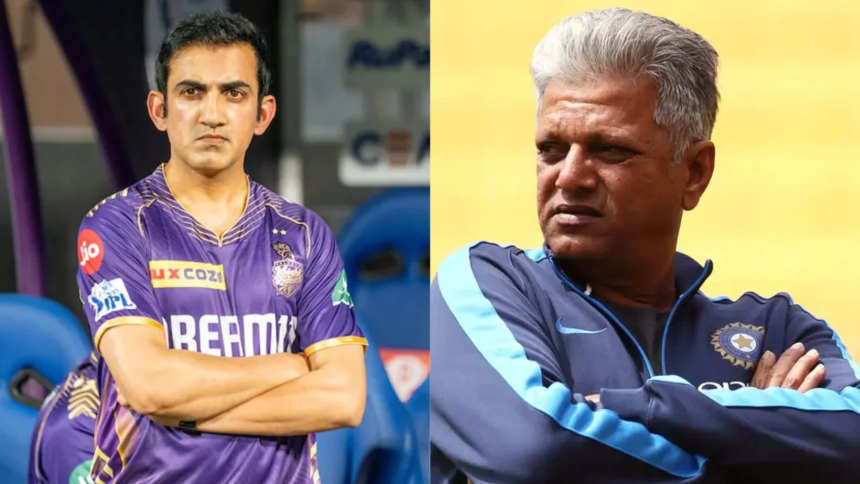Cricket is more than just a sport in India—it’s an emotion. And when tensions brew within the dressing room, it doesn’t just affect the players; it ripples through the entire cricket-loving nation. Recently, reports of unrest in the Indian Cricket Team surfaced ahead of the decisive fifth Test in the Border-Gavaskar Trophy, sparking a heated debate. Former Indian Women’s Team Head Coach WV Raman has shared his candid opinion on the matter, urging for discretion and focus during this critical time. Let’s dive deeper into what’s unfolding and why Gautam Gambhir, the current Head Coach, finds himself in the spotlight.
The Chaos Within: Reports of Dressing Room Tensions
As the Indian team prepares for the final Test at the Sydney Cricket Ground, reports from the Indian Express hinted at rising frustrations. The spotlight fell on Gautam Gambhir, who reportedly expressed dissatisfaction with the team’s lackluster performances. According to sources, Gambhir’s approach of allowing players autonomy for six months hasn’t yielded the desired results. The coach has now decided to steer the ship with a more hands-on approach.
These revelations come at a precarious time, as India stands on the cusp of either salvaging the series or conceding the trophy to Australia. In such a scenario, leaks and internal rifts can act like termites, silently eating away the team’s morale.
WV Raman’s Perspective: Focus Over Fire
Reacting to the reports, WV Raman didn’t hold back. In a tweet, he emphasized the importance of team focus and unity. “#TeamIndia has the chance to draw the #BGT. So, they need to be allowed to get on with their jobs. This is not the time to put out selective leaks and stoke the fire. My humble view,” he wrote.
Raman’s statement underlines a vital point: airing grievances or power struggles publicly during a high-stakes series is counterproductive. Having been in the running for the men’s Head Coach role alongside Gambhir, Raman’s insights carry weight.
The Stakes: What’s on the Line?
India’s performance in the Border-Gavaskar Trophy (BGT) is more than just a series; it’s about legacy. A win in the final Test would not only secure the series draw but also keep India’s hopes of making it to the World Test Championship (WTC) final alive. For Rohit Sharma and Co, this is their moment to shine under immense pressure.
On the other side, the Australian team is eager to reclaim the trophy for the first time since 2014-15. Their hunger to deliver a crushing blow adds another layer of intensity to this battle.
Gautam Gambhir: A Coach Under Scrutiny
The role of Gautam Gambhir as Head Coach has come under intense scrutiny following these reports. Gambhir, known for his fiery attitude and no-nonsense approach, has historically been a strong advocate of discipline and accountability. But the lack of results has put his leadership style under the microscope.
In his own defense, Gambhir reportedly pointed out that he’d given the players the freedom to express themselves over the last six months. However, with performances falling short, it’s clear that a change in strategy is imminent. Gambhir’s decision to tighten the reins is an attempt to restore order and deliver results.
The Leadership Dynamic: Gambhir vs. Raman
Interestingly, the battle for the Head Coach role wasn’t a one-horse race. WV Raman was also considered a strong candidate for the position before the Board of Control for Cricket in India (BCCI) opted for Gambhir after the 2024 T20 World Cup.
While Gambhir’s approach leans towards aggressive tactics, Raman’s style is more measured, focusing on long-term player development. This contrast in philosophies raises an intriguing question: Would a different leadership style have avoided the current turmoil?
The Players’ Role: Navigating the Storm
Amidst the noise, the players bear the greatest responsibility. Senior batsman Cheteshwar Pujara, known for his calm demeanor, will play a pivotal role in stabilizing the innings both on and off the field. Pujara’s ability to anchor the innings and guide younger players is critical in such high-pressure situations.
Similarly, captain Rohit Sharma must rise to the occasion. His leadership—both tactical and emotional—could be the determining factor in India’s success or failure in this Test.
The Opposition: Australia’s Killer Instinct
While India grapples with internal issues, Australia’s camp appears laser-focused. The Aussies, led by Pat Cummins, are determined to exploit any cracks in India’s armor. Their balanced lineup, featuring stalwarts like Steve Smith and Marnus Labuschagne, is geared to deliver a knockout punch.
Why Dressing Room Leaks Are Dangerous
Team dynamics are fragile. Leaks and controversies act like poison, eroding trust and unity within the squad. In cricket, where mental strength often trumps physical skill, such distractions can spell disaster. WV Raman’s call to avoid selective leaks isn’t just common sense; it’s a survival strategy.
The Path Forward: Lessons to Learn
The Indian Cricket Team’s situation highlights some crucial lessons:
- Discretion is Key: Internal matters should remain just that—internal. Public spats only serve to empower the opposition.
- Leadership Clarity: Coaches and captains must work in tandem to set clear goals and strategies.
- Focus on Fundamentals: Instead of letting controversies dictate the narrative, players must channel their energy into the game.
Read More: IBPS RRB PO Final Result 2024 Declared: Check Now!
Conclusion
The upcoming Test isn’t just another game; it’s a battle for redemption. For Gautam Gambhir, Rohit Sharma, and the entire Indian squad, this is their moment to prove their mettle. As fans, let’s hope that the focus shifts from dressing room drama to on-field heroics.










